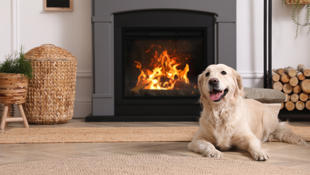Pests in and around your home can be more than just a nuisance—they can also pose health and safety risks. We know that dealing with pests can be distressing.
We want to work with you to help you keep your home pest-free.
Our policy on Pest and Infestations can be found here

Your responsibilities
You are responsible for managing pest problems in your home that do not pose a health risk.
If needed, you should contact a professional pest control service to treat the affected areas.
Please let us know if you notice any gaps or cracks in your walls or floors, so we can help prevent pests from getting in and stop the problem from getting worse.

What will we do
We want to ensure your home is safe, healthy, and secure. We will take action against pests that pose a health risk. If pests are entering through holes or cracks, we may need to carry out repairs.
Reporting a pest issue
Contact us if a pest issue poses a health risk or if you see an infestation in a communal area. We will:
- Send a pest control professional to investigate within 5 working days
- If a treatment plan is required we will ensure action starts within 21 days
- Keep you updated from the start and throughout the process.
Pest prevention tips
Prevention is the best remedy. Animals are attracted to food and shelter removing these will stop them becoming a problem. It's your responsibility to keep your home clean and tidy and your garden maintained.
Here are our tips for stopping pests moving into your home. You can also find more advice from the British Pest Control Association
Wipe up any spills using soap and water and clean your flooring at least once a week.
Pests love free food, so keeping on top of your rubbish is vital to keeping them out. Ensure that you remove rubbish from all your bins when full to keep your home tidy and pest-free.
Any amount of food left a plate or bowl can be a tasty meal for small creatures.
Keep fruit in the fridge, especially when it’s ripe and always put it in the bin if it turns mouldy
Rodents are more likely to find shelter and nest in overgrown gardens.
Feeding pigeons and gulls can create unwanted behavioural issues, nuisance and property damage.
Types of pest
Mice and rats can cause damage to homes and furnishings and chew through electrical wires, increasing the risk of fire or serious injury. They also carry infections that can transmit to people.
If mice or rats have entered the living areas in a home it will be necessary to investigate how they have gained access, carry out any required repair of the building to prevent further infestation and treat/remove vermin inside the home.
Rats nesting in gardens can be remedied by removing any food source, water or shelter such as brambles and long grass. Alternatively, specialists can advise on the best course of direct action to remove vermin.
Flea infestations are commonly transferred to homes by pets but can appear in homes without animals present. Flea eggs can lay dormant for significant periods and hatch when conditions are right. Infestations can be treated with sprays together with normal household cleaning. For larger infestations it may be necessary to contact a pest control service.
Bedbugs carry no diseases, but they present a considerable nuisance, especially as an infestation grows unnoticed and untreated. Bedbugs ‘hitchhike’ from an infested location or item, such as used furniture, clothing, luggage or backpacks. Bedbugs are blood feeders and are adept at finding hiding places near their food source, often a mattress or other item of furniture in a bedroom, unseen until the infestation becomes large enough to be noticeable. First signs of bedbugs may be itchy bites on areas of exposed skin while sleeping, notably on the face, neck and arms, or small spots of blood on bedding. Infestations are difficult to treat because bedbugs can hide in very small places. Treatment from a qualified pest control service together with a regimen of household cleaning and clothes/linen washing is the best way to tackle this nuisance.
Wasps only become a problem if they build a nest in a loft, the eaves, or a cavity wall space in a property. Wasp nests should not be approached or disturbed to avoid swarming if they feel threatened. A pest control service should be contacted to give advice on identification and removal of the nest.
Bees are not classed as a pest and can be mistaken for a wasp, so some help with identification is useful. Honeybees must not be killed as they are protected by law, but they may be rehomed by a local beekeeper if they have built a nest on the property. The National Beekeepers Association provides help and advice on who may be able to assist in a particular locality.
Pigeons can present as a nuisance when roosting and nesting in large groups. Moreover, they can cause damage to property and pose a health risk to people. Nesting debris can get lodged in gutters, drains, vents and chimneys causing blockages, and bacteria found in pigeon droppings can be harmful to humans and pets. Feeding pigeons is therefore to be discouraged as they are sociable birds and available food inevitably attracts large groups. Pigeons have a liking for nesting under solar panels and programmes to fit netting or mesh to prevent this are common practices. Deterrents such as anti-bird spikes and decoy kites are used to deter pigeons with varying degrees of success.
Gulls like pigeons are not technically a pest but can present as a nuisance and cause damage to property. Gulls will nest on a roof if the conditions are right. They look for spaces that are quiet, sheltered, in the shade and where they can perch. If food is being offered nearby it is more likely that they will nest in that neighbourhood. Hungry gulls can be aggressive and feeding gulls teaches them to loiter near adults and children in the hope of getting food. Feeding gulls is to be discouraged not only as it leads to nesting and causes nuisance behaviour, but because low nutrition food is not what a gull needs to remain healthy, worsening issues associated with the significant quantities of droppings that may require removal, and which contain toxins harmful to health. When nesting they can be destructive, damage insulation & air flow systems, pull up exposed roofing felt and will even pull away lead flashing. Other damage includes blockages to rain-water gutters, down pipes and even gas flues. Once established, gulls tend to return to the same roof to nest every year. Their young (usually one per year) will call for the adult bird almost ceaselessly while it gathers food, causing not insignificant noise nuisance issues for some residents. Deterrents are sometimes required to prevent gulls from nesting, such as anti-bird spikes and meshing around chimneys. Gulls and their nests are protected under law, so any deterrents need to be assessed and put in place by a suitably qualified pest control service.
Cockroaches are attracted to certain conditions in a property and prefer warm, dark, humid parts of a home such as areas around pipe ducts in kitchens and bathrooms or underneath cookers where there is abundant food. They carry bacteria and can contaminate food that they walk over. Cockroaches also carry other pathogens that can lead to serious illnesses. A pest control service should be contacted to advise and eliminate any infestation.
Moths can be prevented from infesting clothing and linen through normal household cleaning and storage routines. Infestations may go undetected for long periods of time if items are not inspected regularly. Carpet beetles can damage woollen carpets or rugs in a home but can be prevented through good housekeeping. Treatments for both can be tackled using household products, however for carpet beetles if the infestation is significant contacting a pest controller may be the better option.
Silverfish live in damp and humid environments and prefer to hide in dark undisturbed areas of the home. They don’t carry a serious health risk, but they can swarm if not dealt with. Normal household cleaning routines and vacuuming are usually sufficient to deal with them. However, if they become out of control, it may be advisable to seek help and advice from a pest control professional.
Mould mites are attracted to properties primarily because of the presence of excessive mould and fungi, their primary food sources. They like damp and humid conditions and their presence in large numbers usually indicates a damp and mould issue in the property. They are not directly harmful as they do not bite or sting and can be removed using common cleaning products.
-
pdf 181Kb
Pests And Infestations Policy

